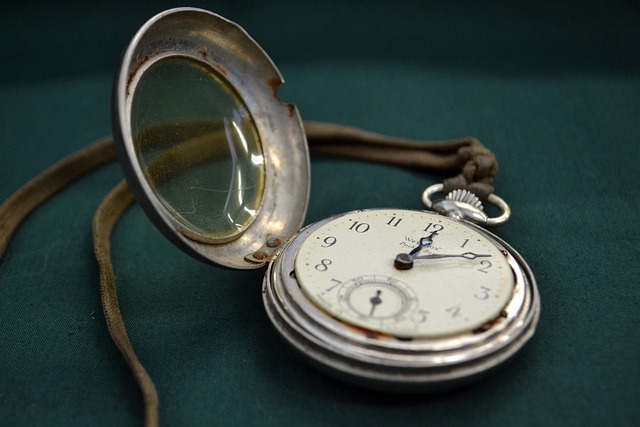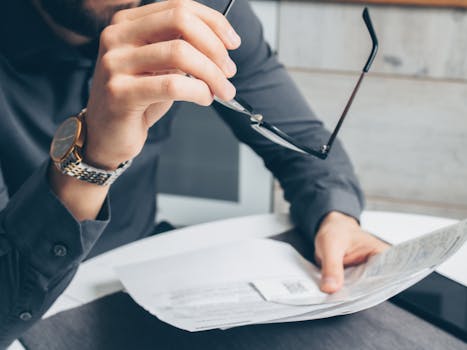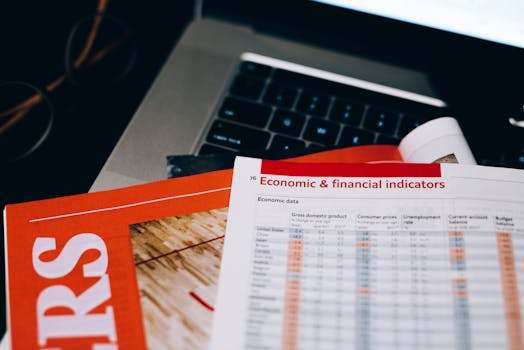Outboard Financing
As an Amazon Services LLC Associates Program participant, we earn advertising fees by linking to Amazon, at no extra cost to you.
The Future of Outboard Financing: What to Expect
Outboard financing is on the brink of transformation, influenced by technological advancements and shifting consumer attitudes. The traditional approach of rigid payment structures is giving way to more flexible options tailored to individual financial situations. For instance, companies are increasingly offering subscription-based financing, allowing users to pay a monthly fee for the use of outboard motors instead of a large upfront cost. This model not only improves accessibility but also aligns with the demand for minimal long-term commitment.
Moreover, enhanced digital platforms are making the financing process more straightforward and transparent. Through online calculators and personalized financing solutions, consumers can better understand their options. This trend toward digitization means that more people will gain access to financing plans and will be empowered to make choices that suit their needs.
I predict that we will also see an increase in environmentally-focused financing options. As more consumers prioritize sustainability, lenders are likely to cater to this audience by offering favorable terms for eco-friendly outboard motor equipment. This could lead to innovations in electric or hybrid outboard motor financing as manufacturers realize the market shift.
Additionally, regulatory changes aimed at promoting finance accessibility are expected. Governments may introduce policies to protect consumers, ensuring they have fair access to outboard financing options. This legislative support could help demystify financing for new buyers and encourage responsible borrowing.
Lastly, the integration of Artificial Intelligence (AI) could reshape the risk assessment process. By using data analytics, lenders can make quicker, more accurate determinations regarding loan approvals. This innovation could lead to lower interest rates for those with solid financial profiles, thereby encouraging more consumers to invest in outboard motors.
The future of outboard financing is not just about numbers and rates but reflects a noticeable shift towards convenience, transparency, and sustainability.
Market Trends in Outboard Financing for 2023
The outboard financing market in 2023 is shifting towards more consumer-friendly options. As interest rates fluctuate, lenders are becoming increasingly competitive, offering attractive rates to entice buyers.
The growth of the recreational boating industry after the pandemic has led to heightened demand for financing options. I’ve seen an uptick in loan applications, indicating that consumers are eager to invest in new boats, which significantly impacts the financing landscape.
Many consumers now prioritize flexible payment plans. Lenders are responding with customizable financing solutions that cater to individual financial situations. This trend reflects a broader recognition that one-size-fits-all loans often don’t serve the consumer well.
The digital transformation in financial services offers a streamlined application process, allowing consumers to secure financing quickly. I appreciate how technology simplifies access to loan options, making it easier for buyers to compare deals online.
Additionally, eco-conscious financing options are gaining traction. Buyers are increasingly interested in electric or hybrid outboard engines, leading lenders to introduce specific loan products targeting that market. I find this trend particularly exciting, as it aligns financial incentives with environmental sustainability.
Lastly, collaborations between manufacturers and lenders have become more common. These partnerships often result in exclusive financing deals, further incentivizing potential buyers to make their purchases sooner. It’s clear that the outboard financing sector is adapting to meet modern consumer demands while aiming for a more engaged and educated market.
Oct 18, 2002 … not keep separate accounts for each boat. 2.2 The Financing of Fishing Boats. We first describe the traditionally prevailing credit and …
Financing a New Technology in Small-scale Fishing: the Dynamics …
What area do you work in within the VPFA portfolio? I work in the Office of the Vice President for Finance and Administration.
Coastal Financing Revenue Analysis … electric outboard motors.49 Finally, any interest from the SFRBTF is rolled …
Comparison of Outboard Financing Rates by Lender
This table compares outboard financing rates from various lenders, offering insights into the best options available for potential borrowers:
| Lender | Interest Rate (%) | Loan Term (Months) | Fees | Customer Rating |
|---|---|---|---|---|
| Lender A | 6.5 | 60 | $500 | 4.8 |
| Lender B | 7.0 | 72 | $600 | 4.5 |
| Lender C | 5.8 | 48 | $400 | 4.9 |
| Lender D | 6.0 | 60 | $300 | 4.6 |
| Lender E | 7.2 | 72 | $700 | 4.3 |
Comparing Dealership vs. Bank Financing
When weighing the options between dealership financing and bank financing, it’s crucial to understand the nuances of each approach. Dealership financing typically offers convenience. You can complete the entire transaction in one place, which may seem appealing. However, the interest rates can sometimes be higher than what banks offer. Dealerships might also provide incentives like promotional rates or cash rebates to sweeten the deal, but you should always read the fine print. The added convenience can come at the cost of a less favorable loan.
On the other hand, bank financing often provides more competitive interest rates because they may have stricter approval processes and can assess your creditworthiness more thoroughly. This means you could secure a lower monthly payment over time. Furthermore, banks may provide a clearer loan structure with fewer hidden fees. However, you might need more patience, as the process can be longer compared to dealership financing. I often prefer bank financing, especially if I have the time to shop around. Choosing a bank allows you to leverage your relationship with personal or business banks, which may lead to even better terms.
Ultimately, the decision boils down to your financial situation and needs. If you can get a significantly better rate from a bank, it often makes sense to go that route. However, if you value convenience and think that dealership financing could work in your favor, be sure you’re not sacrificing too much on the interest rate or terms. Evaluate your priorities carefully before committing to either option.
The Role of Down Payments in Outboard Financing
Making a down payment is not just a formality; it is a critical financial move. Whether you’re financing a new or used outboard motor, having a substantial down payment can significantly impact the overall cost. Personally, I’ve seen countless buyers reduce their financial burden by putting down at least 20% of the purchase price. This leads to lower monthly payments, as the loan amount is reduced from the start.
Additionally, a larger down payment often translates to better financing terms. Lenders view buyers who make significant down payments as lower-risk customers. This perception can result in lower interest rates, which can save you a substantial amount over the life of the loan. In my experience, a good down payment not only enhances approval odds but also opens doors to more favorable loan conditions.
The type of financing you select can also influence how much you should consider for a down payment. If you’re opting for traditional bank financing, expect to face stricter requirements regarding down payments. On the other hand, dealer financing options might offer more flexibility, but that often comes at the cost of higher interest rates. Keeping this in mind, I always advise making the highest down payment you can afford.
Financing an outboard with a lower down payment is possible, but it often leads to negative equity or ‘upside-down’ loans, where you owe more than the asset’s worth. This situation can be incredibly stressful if you want to sell or trade your outboard in the future. By committing to a larger initial investment, you genuinely secure a more stable financial position.
In summary, the role of a down payment in outboard financing cannot be overstated. It directly influences your financial obligation, your payment terms, and ultimately your satisfaction with your purchase. Knowing the importance of a down payment has helped me and many others make smarter financial choices in our purchases.
The Importance of Budgeting Before Financing
Understanding the significance of budgeting lays the groundwork for smart financial choices.
- A clear budget reveals your financial reality. I always find that knowing exactly where my money is going helps me understand how much I can afford for financing without stretching my resources too thin.
- Budgeting allows for prioritization of goals. By outlining my expenses, I can prioritize what matters most to me and decide if financing certain desires aligns with my financial capabilities.
- Preventing unnecessary debt is crucial. When I budget carefully, I can avoid taking on debt that doesn’t serve my long-term goals, helping me avoid the stress of unmanageable repayments.
- Budgeting provides a safety net. It allows me to see whether I have spare funds for emergencies, ensuring that I’m not financially exposed before considering any additional financing.
- Clarity in financing options emerges from budgeting. By creating a budget, I can identify which financing options are viable and which are not, allowing me to make choices that support my financial health.
The Benefits of Financing Your Outboard Purchase
Financing your outboard purchase can significantly enhance your financial flexibility. By not paying the full price upfront, you can allocate your resources more effectively, potentially preserving cash for other essential expenditures or investments.
One of the key benefits of financing is the ability to manage your budget and maintain liquidity. Instead of depleting your savings or stretching your finances too thin, you can opt for affordable monthly payments that fit seamlessly into your existing budget.
Financing can also enable you to purchase a higher-quality outboard than you might otherwise afford. With financing options, you can secure the best model available rather than settling for a lesser product due to immediate cash constraints. This often results in better performance and longevity, ultimately offering better value for your money.
Moreover, many financing plans come with low or zero-interest promotions. Taking advantage of these deals can save you a significant amount compared to paying with cash, as it allows you to spread your payments over time without incurring substantial extra costs.
Additionally, financing through reputable dealerships or banks may come with benefits such as warranties or service packages. These extras can provide peace of mind and potentially reduce maintenance costs down the line.
Building or improving your credit score is another compelling reason to consider financing. Timely payments on your financing agreement can bolster your credit history, making it easier and more affordable to secure future loans for larger purchases.
Finally, financing allows for greater opportunities to invest your capital elsewhere. Instead of locking your funds into a single asset, you can diversify your investments, potentially leading to higher overall returns.
Considerations for Choosing the Right Loan
Essential factors for evaluating loan options that can maximize your financial flexibility.
- Understand the loan purpose. Knowing whether it’s for a home, vehicle, or personal expense significantly impacts your choice.
- Evaluate interest rates. Lower rates can save you thousands over the loan term, so always shop around for the best offer.
- Consider the loan term. Shorter terms usually mean higher monthly payments but less interest paid overall.
- Look at fees and penalties. Origination fees, prepayment penalties, and late fees can add up; ensure you know the full cost of the loan.
- Assess your financial situation. Be clear about your ability to repay the loan based on your income and expenses.
- Check lender credibility. Reliable lenders are crucial; read reviews and check their ratings for peace of mind.
- Understand loan type. Fixed vs. variable rates can change your financial landscape, so choose wisely based on your risk tolerance.
Honda Marine – 4-stroke outboard motors from 2 to 250 hp. Find outboard engine specs, special financing, accessories, and Honda Outboard Motor dealers near …
Honda Marine | 4-Stroke Outboard Motors, Parts, Accessories …
Conveniently access your Yamaha account online to make payments, view balances & statements, manage account preferences and more.
Consumer Price List FAQs Factory Financing Outboard Parts Yamalube Catalogs Service Campaigns … site work as you expect it to. The information does not …
Sep 4, 2024 … Boats can cost thousands but a loan can spread your payments for as long as 20 years · Boatzon: Best for large boat loans · Boatloan.com: Best for …
Credit Score Impact on Outboard Financing
Your credit score plays a crucial role in obtaining financing for an outboard motor. Lenders frequently evaluate your credit history to determine their risk when providing loans. A high credit score typically results in better interest rates and terms, making it easier to afford that boat you’ve been eyeing.
If your credit score falls below a certain threshold, securing financing can become challenging. Lenders may deny your application or offer less favorable conditions, such as higher interest rates or larger down payment requirements. This can drastically impact your overall purchasing power.
To improve your chances of securing financing, start by checking your credit report for accuracy. Identify any discrepancies or negative items that can be addressed. Repaying existing debts and ensuring timely payments can also significantly boost your credit score. A few targeted financial moves can elevate your score considerably.
I recommend maintaining a credit utilization ratio below 30%. This means if you have a credit limit of $10,000, aim to keep your balance under $3,000. Additionally, avoid opening new credit lines just before applying for financing; it can lower your score temporarily.
Understanding how lenders assess credit can empower your choices. Some may view aspects like your income and employment status favorably, even if your credit score isn’t perfect. Explore financing options that consider a broader picture than just the score.
Be mindful of predatory lenders if your credit score is low. These types of lenders often capitalize on more vulnerable individuals, offering loans with exorbitant rates. It’s vital to read the fine print and understand all terms associated with any financing offer.
Ultimately, keeping a close eye on your credit score can open doors in outboard financing. Making informed credit decisions today can lead to achievable boating dreams tomorrow.
Common Mistakes to Avoid in Outboard Financing
One of the biggest pitfalls in outboard financing is failing to understand the total cost involved. Many people only consider the initial price of the outboard motor, but you must factor in maintenance, insurance, and storage costs. Skipping this basic calculation can lead to financial strain down the road.
Another frequent mistake is not shopping around for the best financing options. Relying solely on the dealer’s financing plan often means missing out on more favorable terms from banks or credit unions. Explore various lenders and compare rates to avoid overpaying.
Ignoring the fine print in loan agreements can come back to haunt you. Look out for hidden fees, prepayment penalties, or unfavorable terms that can quickly erode your financial standing. Always read the document carefully and ask questions if something is unclear.
Many individuals also underestimate their credit scores’ impact on financing. A lower credit score can significantly increase interest rates. Before applying for financing, I always recommend checking your credit report and taking steps to improve your score if necessary.
Overestimating your budget can lead to unnecessary financial pressure. Be realistic about what you can afford monthly. Knowing your limits will help you avoid buying a motor that stretches your finances too far.
A common error is forgetting to account for seasonal usage. If you only plan to use your outboard motor for a few months annually, financing it over an extended period might not make sense. Consider shorter loan terms or alternative financing that suits your usage pattern.
Lastly, failing to ask for a better deal can mean leaving money on the table. There’s often flexibility in pricing and financing offers, especially if you’re prepared to negotiate. Don’t be afraid to speak up and advocate for yourself.
How to Calculate Your Outboard Financing Costs
Calculating your outboard financing costs involves understanding several key components that impact the overall expense. First and foremost, you need to determine the total price of the outboard motor you wish to purchase. This price will serve as the foundation for your calculations. Be sure to account for any taxes, fees, and installation costs, as these can significantly increase your total investment.
Next, assess your down payment. A larger down payment will reduce the amount you need to finance, thereby lowering your monthly payments and the total interest paid over the life of the loan. I highly recommend aiming for a down payment of at least 20% to avoid high interest rates.
Then, you need to review the financing terms. This includes the length of the loan, usually ranging from 3 to 7 years, and the interest rate. Interest rates can vary widely based on your credit score and the lender, so shopping around is essential. Use online calculators to estimate your monthly payments based on different interest rates and loan terms; this will give you a better picture of your financial commitment.
Another factor is the type of loan, whether it’s a fixed or variable interest rate loan. Fixed loans offer stability with consistent payments, while variable loans can fluctuate, affecting your budget unpredictably. I prefer fixed-rate loans for this reason, as they provide peace of mind.
Finally, consider any additional costs associated with ownership, such as insurance, maintenance, and fuel. These recurring expenses will add to your overall financial obligation and should be factored into your budget. By accounting for these aspects, you’ll arrive at a clearer understanding of your outboard financing costs.
Understanding Outboard Financing Options
Outboard financing has become an attractive option for many individuals looking to fund their marine adventures without breaking the bank. One of the key advantages of outboard financing is the flexibility it offers. Unlike traditional loans, these options often come with lower interest rates and less stringent credit requirements, allowing a broader range of borrowers to qualify.
There are several types of outboard financing options, including personal loans, boat loans, and even credit lines secured by equity. Personally, I find that dedicated boat loans can be incredibly beneficial. They are structured specifically for marine purchases, often featuring longer repayment terms and better rates than personal loans. Many lenders also offer specialized marine financing that accommodates unique aspects of boat ownership, such as insurance costs and maintenance.
Additionally, credit unions can be an excellent source for competitive outboard financing options. Credit unions typically offer more favorable terms due to their non-profit structure. They usually have lower fees and interest rates that can lead to substantial savings over time.
Another option is to consider manufacturer financing. Many boat manufacturers offer promotional financing to attract customers. These deals can include low or even zero-percent financing for a specific period, making them a compelling choice for new purchases. However, it’s essential to read the fine print to avoid pitfalls such as price inflation on the boat itself.
Lastly, if you’re a seasoned buyer, you might also explore peer-to-peer lending platforms. These platforms can provide funds with competitive rates by connecting borrowers directly with lenders. This can often lead to more personalized terms that traditional banks may not offer.
In the end, the best financing option will depend on your financial situation and the specifics of what you’re looking to purchase. I recommend taking the time to compare these different avenues before making a decision. This level of due diligence will ensure you secure the best financial terms for your outboard purchase.
Top Tips for Securing the Best Financing Rates
Start by checking your credit score. A higher score typically enables access to better rates. Before applying for financing, pull your report and dispute any inaccuracies that could be negatively impacting your score.
Shop around and compare offers. Don’t settle for the first deal that comes your way. Obtain quotes from multiple lenders, whether they’re banks, credit unions, or online platforms. Each institution has different criteria and offers that could significantly affect the rates you receive.
Consider the timing of your application. Interest rates can fluctuate based on economic conditions. Spending time observing market trends can pay off, particularly if you notice a dip in rates. Applying during a favorable period can secure a lower rate.
Leverage relationships with lenders. If you have an existing account with a bank or credit union, inquire about special rates for current customers. Many institutions offer loyalty discounts, which could lead to lower financing rates.
Make a substantial down payment. A larger down payment not only reduces the amount you need to finance but also signals to lenders that you are a lower risk. This can lead to better rates and terms.
Consider a co-signer. If your credit isn’t great, having a co-signer with a strong credit history can significantly improve your chances of receiving better rates. Lenders are often more willing to offer favorable terms when they perceive less risk.
Be mindful of your debt-to-income ratio. Lenders look at how much debt you have relative to your income. Reducing existing debts ahead of a financing application can enhance your appeal and help secure lower rates.
Seek to improve your financial standing. Addressing any red flags in your financial history—like late payments or high credit utilization rates—can dramatically impact your financing rates. Take time to stabilize your finances before applying.
Utilize prequalification options. Many lenders offer prequalification, which gives you an idea of your potential rates without impacting your credit score. This step can help you gauge where you stand before you commit.
Consider fixed vs. variable rates carefully. Fixed rates provide stability but may start higher than variable rates. Weigh the benefits of each option based on your financial situation and market conditions.
Keep an eye on associated fees. Sometimes a lower interest rate can come with higher fees that negate your savings. Analyze the annual percentage rate (APR) instead of focusing solely on the interest rate.
Understanding APR and Its Significance
A comprehensive overview of APR, emphasizing its critical role in personal finance.
- APR stands for Annual Percentage Rate, which represents the cost of borrowing or the yield on an investment.
- Knowing the APR helps me compare different financial products, ensuring I make wise choices.
- A lower APR can significantly reduce the total cost of a loan over its life, which is something I always look for.
- APR can include fees and other costs, not just interest rates, so I always read the fine print.
- When saving or investing, the APR is crucial for understanding how much I can earn over time.
- Tracking changes in APR trends can give me an edge in timing my financial decisions.
- Understanding the difference between fixed and variable APRs has helped me better manage my interest rate risk.
- By focusing on APR, I can build strategies that align with my financial goals.
Understanding Loan Terms and Conditions
Understanding loan terms and conditions is crucial for making sound financial decisions. Every loan agreement includes specific terminology and clauses that can significantly affect your financial situation. Focus on key components such as the interest rate, repayment period, and fees involved. The interest rate can be either fixed, which remains the same over the life of the loan, or variable, which fluctuates based on market conditions. I personally believe it’s vital to distinguish between these, as a variable rate can lead to unexpected increases in monthly payments.
Additionally, the repayment period is another essential aspect. Loans can have varying terms, often ranging from a few months to several years. Longer terms generally result in lower monthly payments but may cost you more in interest over time. Calculate the total payment amount for various terms to truly understand how they will impact your financial future.
Watch out for fees and penalties that lenders may impose if you miss a payment or pay off the loan early. These hidden costs can derail your financial plans. Always read the fine print—terms that look favorable at first glance can turn unfavorable due to hidden fees. Look for origination fees, late fees, and prepayment penalties, as these can significantly influence your decision.
Lastly, consider the loan’s purpose. Secured loans require collateral, which means you risk losing an asset if you default. Unsecured loans, while less risky in that sense, often come with higher interest rates. Different loan types serve different functions, and the clarity of their terms can determine whether they benefit or hinder your financial goals. Evaluate your financial needs carefully to select a loan that aligns with your long-term objectives.
What are the typical interest rates for outboard financing?
Interest rates for outboard financing typically range from 4% to 10%. Several factors influence these rates, including your credit score, loan term, and the lender’s policies. If you have excellent credit, you can expect to secure rates on the lower end of that spectrum. On the other hand, borrowers with poor credit might face higher rates, potentially exceeding 10%.
Additionally, the term length significantly impacts rates; longer terms might seem attractive due to lower monthly payments, but they often incur higher interest over the life of the loan. Smaller, local lenders might offer competitive rates compared to larger banks, so it’s wise to shop around.
Always consider total borrowing costs, not just the interest rate. Look into any fees associated with securing the loan, as these can add to your total expenses and affect your budget.
What documents are needed for applying for outboard financing?
To apply for outboard financing, you’ll generally need to provide several key documents. First and foremost, a valid government-issued ID is essential. This verifies your identity and confirms your eligibility. Next, proof of income is crucial. This could include recent pay stubs, tax returns, or bank statements that demonstrate your financial stability. It’s also wise to have your Social Security number handy, as lenders often require it for credit checks. Don’t forget about documentation related to the outboard itself. This means having the purchase agreement, details of the outboard model, and any trade-in information if applicable. Lastly, be prepared to furnish your credit history report, which outlines your previous borrowing. Ensuring you have these documents ready can significantly streamline your financing process.
How can I improve my credit score for better financing options?
Pay your bills on time. Late payments can severely impact your credit score. Set up reminders or automate payments to avoid missing due dates. Keep credit utilization below 30%. This means using less than a third of your available credit. If you’re over this threshold, consider paying off some balances or requesting a credit limit increase. Review your credit report regularly. Identify any inaccuracies and dispute them promptly. Errors can drag your score down unnecessarily. Limit new credit applications. Each hard inquiry can lower your score slightly. If you don’t need new credit, put a pause on applications. Diversify your credit mix. Having various types of credit—like installment loans and credit cards—can improve your score. However, only take on debt that you can manage. Consider becoming an authorized user. If a family member or friend has a good credit history, their positive payment record can benefit your score.
Can I finance a used outboard motor?
Yes, you can finance a used outboard motor. Many financial institutions, including banks and credit unions, offer loans specifically for marine purchases. I often recommend checking with them for their specific requirements, which can vary widely. Keep in mind that the financing options available will significantly depend on the motor’s age, condition, and overall price.
Additionally, some dealerships provide financing plans, which can be convenient; however, these may have higher interest rates than traditional loans. I suggest comparing rates from various lenders to ensure you’re getting the best deal. If you have a strong credit score, you might secure a lower interest rate, making your monthly payments more manageable.
Moreover, be prepared to provide all the essential documentation, such as proof of income and credit history. Always read the fine print on any financing contract to avoid hidden fees or unfavorable terms.
What is the difference between secured and unsecured loans?
Secured loans are backed by collateral. This means that if you fail to repay the loan, the lender can take the asset used as security—like your home or car—to minimize their losses. Because the risk to lenders is lower, secured loans typically have lower interest rates. On the other hand, unsecured loans are not tied to any asset. This makes them riskier for lenders, resulting in higher interest rates to compensate for that risk. With unsecured loans, your creditworthiness primarily dictates approval and terms. It’s crucial to weigh your options: if you have valuable collateral and are seeking a lower rate, a secured loan might be your best bet. However, if you prefer to keep your assets unencumbered, an unsecured loan is the way to go, albeit at a higher cost. Understanding these differences is essential for making choices aligned with your financial goals.
How do economic factors influence outboard financing options?
Economic factors heavily influence outboard financing options, shaping both availability and terms. For instance, both the interest rates set by central banks and the broader economic climate determine the cost of borrowing. If the economy is strong, lenders are more likely to offer favorable financing terms, including lower interest rates. Conversely, during economic downturns, lenders may tighten credit and increase rates due to perceived risk, making financing less accessible.
The type of economic growth also matters. In periods of rapid expansion, consumer confidence rises, resulting in increased demand for goods and services, which can lead to more flexible financing options. On the other hand, sluggish growth can prompt stricter lending guidelines and higher down payment requirements.
Inflation impacts purchasing power, affecting financing structures as well. If inflation is high, lenders might mitigate risks by adjusting rates upward, meaning borrowers may face additional costs. Understanding these dynamics is crucial when considering financing for outboard purchases.
Financing makes outboard ownership more attainable. With various financing options available, individuals no longer have to save for years to buy an outboard. Affordable monthly payments allow for immediate enjoyment without the initial financial burden. I believe that financing opens doors to new opportunities for adventure and leisure.
Understanding your credit score is essential when applying for loans. A higher score can lower your interest rates and increase your chances of approval. Conversely, a poor score may lead to denial or higher borrowing costs. Invest time in checking your score, correcting errors, and improving it to unlock better financial opportunities.
**I’ve found that evaluating various financing options consistently leads to better rates.** By comparing lenders, terms, and fees, I can often negotiate lower interest rates that significantly impact my savings. **This simple step is crucial for maximizing financial potential.** Each saved dollar increases my overall wealth, compelling me to always seek out the best deal available.
Ignoring high-interest debts can drain your resources faster than you think. I’ve realized that assessing loan terms and identifying hidden fees beforehand makes a huge difference. By staying vigilant and educated, I protect my financial future and maximize savings. Little oversights can lead to significant financial losses; being proactive pays off enormously.
**A larger down payment directly reduces your loan amount, leading to smaller monthly payments.** This not only makes budgeting easier but can also lead to more favorable interest rates. **With a significant down payment, you could save thousands over the life of your loan.**
**Being aware of current market trends significantly boosts my ability to negotiate.** Understanding how pricing shifts and demand fluctuations impact my negotiations allows me to advocate for better terms effectively. **A solid grasp of the market gives me the confidence to walk away from unfavorable offers.** This knowledge ultimately positions me for greater success in financial discussions.
As an Amazon Services LLC Associates Program participant, we earn advertising fees by linking to Amazon, at no extra cost to you.













